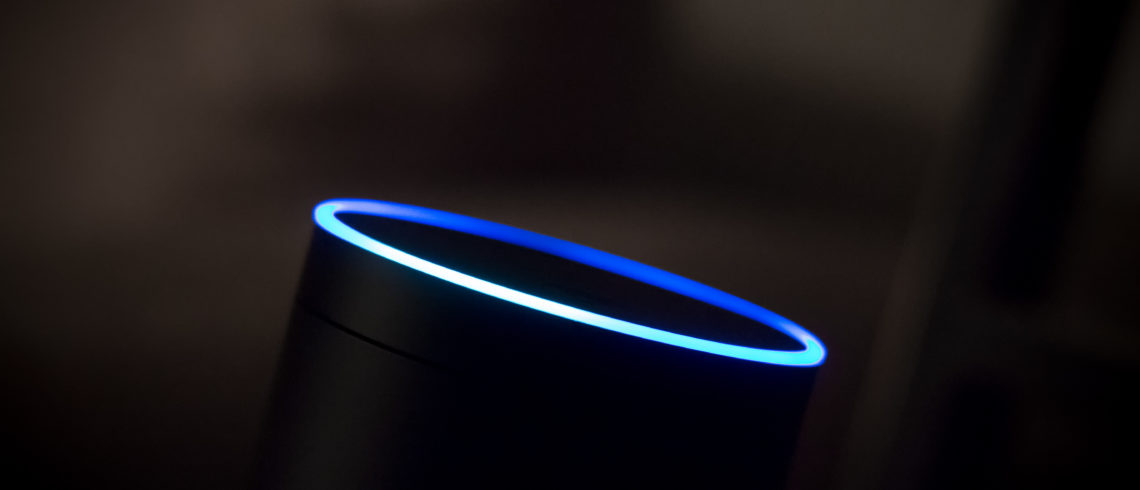In this set of articles, we’re going to go through the 5 biggest trends that we think will make the future of apps in 2017. First of these 5 trends, the vocal interfaces: come back on its 2016 performances, 2017 expectations and what you should do to embrace this vocal revolution!
Vocal interfaces
“Conversational User Interface” has been a big buzzword in 2016 with Facebook Messenger opening its platform, Microsoft doing the same with Skype, not to mention Slack, Telegram, Kik, etc. In mid-2016 Apple opened (a little bit) its Siri to app developers and Google renewed its assistant with Google Assistant and made it available through voice and text with Google Home, Google Allo and Google Pixel, among others.
But who has been the star of the year? The 2016 Facebook Messenger platform launch? The 2016 Microsoft move towards opening Skype? The 2016 Siri SDK launch? The 2016 brand new Google Assistant integrated into all the new voice-assistant-enabled Google products?
None of them! The star of the year was Amazon, with its 2014-launched Echo. Equipped with Amazon’s voice assistant Alexa, they now have sold 5.1 millions units, with sales up over 9x compared to last year’s holiday season. Such a huge success that Amazon had to delay the delivery of some orders to after Christmas.
Amazon Echo?
In a few words, the Amazon Echo is some kind of cylindrical speaker placed in the center of your home e.g. the living room, the kitchen, … It is equipped with long-range microphones and is always ready to receive requests from you. Just say “Alexa + your request” from anywhere in the room and you’ll receive the answer in the next second.
It basically does everything Siri can do and, through its home-centric position, it is – among other things – absolutely perfect at controlling all of your smart home devices.
Not convinced about speaking to a device? You’ve had one for years in your pocket, whether it is Siri or Google Now, and with the exception of with your friends and a high dose of alcohol, you’re not really using it.
Actually, today, one of the biggest usages of voice assistants is in cars, many of you have already probably controlled their smartphone by saying “Hey Siri, read my messages” or “Hey Siri, I need to go to Avenue Louise in Brussels”. Why did you do so? Because when your eyes and your hands are (or should be!) focused on driving the car, only your voice is available for interacting with your smartphone.
For what situations?
This is it: there are situations in which it is far better to use your voice rather than your fingers.
And Alexa can cover a lot of situations like this:
- “Alexa, what’s the next step of this recipe”, isn’t it better than putting your fingers full of flour on your tablet?
- “Alexa, what are the news this morning?” when you’re taking your breakfast
- “Alexa, turn off every lights” when you’re about to leave
- And of course, because this is Amazon: “Alexa, I don’t have milk anymore”. Done. You’ll receive milk tomorrow.
It can also cover pure comfort-related situations: “Alexa, turn on movie mode”.
I know what you’re thinking: we’re going to all become lazy assisted humans. But come on, how many times a week do you fight with your wife or husband about who’s going to dim the lights or to lower the blinds so that you can better enjoy the TV?
One of the other big things with Alexa is that Amazon has opened the platform to third party developers, so that anyone can today submit a Skill (Amazon’s name for “app”) to bring its services on any Alexa-enabled devices. At the time of this writing, there are currently 6.000 skills available, and the marketplace currently grows by 1.000 skills each month.
With this Skill store, Alexa has recently become a potential lifesaver, with Ask My Buddy that enables elderly (and non-elderly as well) people to say out loud “Alexa ask my buddy to alert my family” for the assistant to call everyone on the list, in the case you’re blocked on the floor.
Even more comfort, the latest robot vacuum from Samsung can now be called through Alexa. Next evolution will probably be “Alexa, the kitchen is dirty, call the vacuum”.
Knowing all of this, you might not be surprised that Alexa is one of the stars of CES 2017: not only home objects constructors are integrating Alexa (Samsung with its latest vacuum, Whirlpool with its new washers, dryers, refrigerators and ovens, Linksys with a router that reads the WiFi password aloud if you ask it to Alexa, etc.) but Amazon has also opened the Alexa voice assistant so that any constructor can integrate the assistant technology itself right into their devices: among others Lenovo has just announced an Amazon Echo competitor… which integrates the Amazon Alexa voice assistant, and Ford is doing the same inside its new cars.
Now, there’s this small problem for us European guys: currently Alexa only speaks English and German and is sold in U.S., U.K. and Germany. That’s the reason we’ve not heard a lot about it.
We expect however more languages, and especially French, during 2017.
But, well, that’s an opportunity: this means you still have some time to prepare yourself to these interfaces… so, what should you do?
Here are our advices:
- Buy an Amazon Echo (or a Google Home), put it in your private office or at home and install skills on it:
- Link it to your calendar so that you can have agenda recaps through voice
- See how Pizza Hut or Domino’s Pizza leverage the Alexa-enabled devices for their business
- Discover the opportunities for the news operators through Alexa’s flash briefings
- Ask Alexa when you’ll be delivered for your latest Amazon order
- Once you will be using the voice assistant to keep tracks of what you have to buy next time you go to the store, use the IFTTT skill to get the list emailed to you or printed right from Alexa.
- Oh, and if you often lose your phone at home, Alexa might help you as well!
- … and find more skills in the store.
- Experience smart home (or smart office) with voice assistants: if you’re new to this, buy a Philips Hue Starter Pack, connect it and say “Alexa, discover devices”.
Even easier, we have the Amazon Echo and the Google Home in our offices, just ask your Tapptic representative for a demonstration in our offices.
And once you’ll have discovered this brand new voice assistant world, don’t hesitate to contact us if you wish to study how this new technology can help your business.


